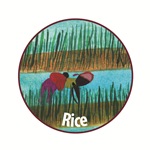Cloning, characterisation and validation of AltSB/Al tolerance in rice (G7009.07)
| Target country |
Indonesia |
| Lead institute | Cornell University/United States Department of Agriculture–Agricultural Research Services (USDA–ARS) |
| Partner |
Indonesian Center for Agricultural Biotechnology and Genetic Resources Research and Development |
A primary limitation to crop production on acid soils, which make up as much as 50 percent of the world’s arable lands, is aluminium (Al) toxicity. On acid soils, Al toxicity results in rapid damage and growth inhibition of root systems, which leads to significant yield reductions due to inhibited uptake of water and nutrients.
Rice is the most Al-tolerant cereal, yet Al toxicity is still a major limitation to rice production in both rainfed lowlands and uplands.
In this project we are taking advantage of the recently cloned sorghum Al-tolerance gene that is a member of the MATE family of organic solute transporters, to identify rice homologues that are candidate tolerance genes. In rice, a computational analysis of the MATE family was conducted which identified five MATE genes that are co-localised with previously identified Al-tolerance QTLs. They are now being tested as candidate Al-tolerance genes using T-DNA rice knockout lines.
Should these homologues not be functional in rice, complementary approaches are already in place.
Objectives
- Characterise T-DNA knockouts for candidate AltSB MATE homologues in rice for physiological function and involvement in Al tolerance and quantification of the role of these candidate MATE genes in rice Al tolerance.
- Fine-map and/or clone the gene(s) underlying the novel major Al resistance QTLs previously identified on rice chr 12.
- Complete the whole genome mapping for rice Al tolerance using the OryzaSNP II chip (44k SNP chip)
- Initiate development of Al tolerance NILs based on identified QTLs and also newly mapped loci from whole-genome association mapping to quantify the contribution of individual loci to Al tolerance and as a resource for breeding for rice Al tolerance.
